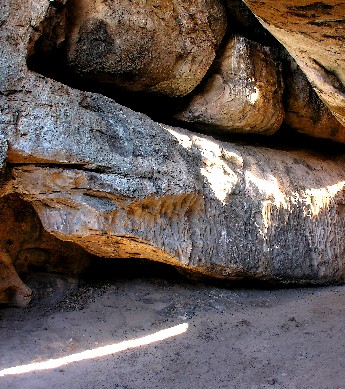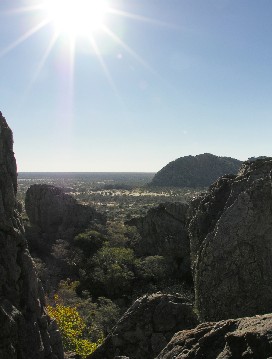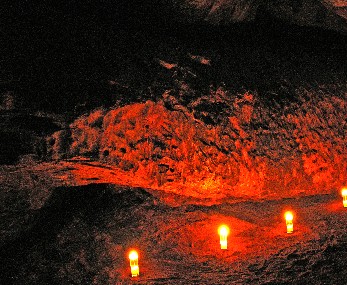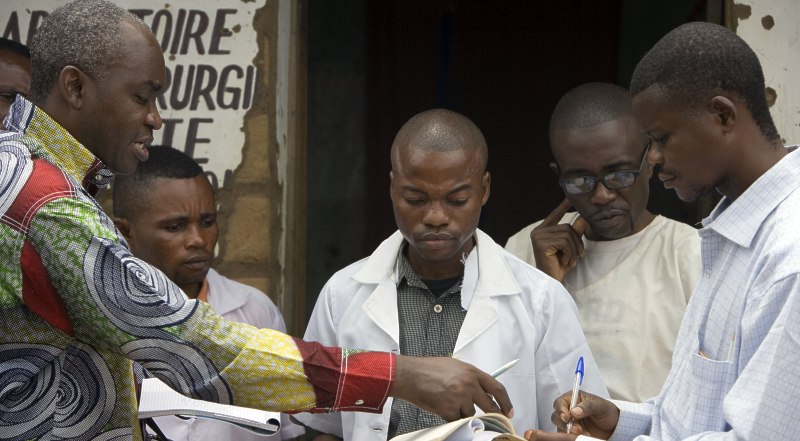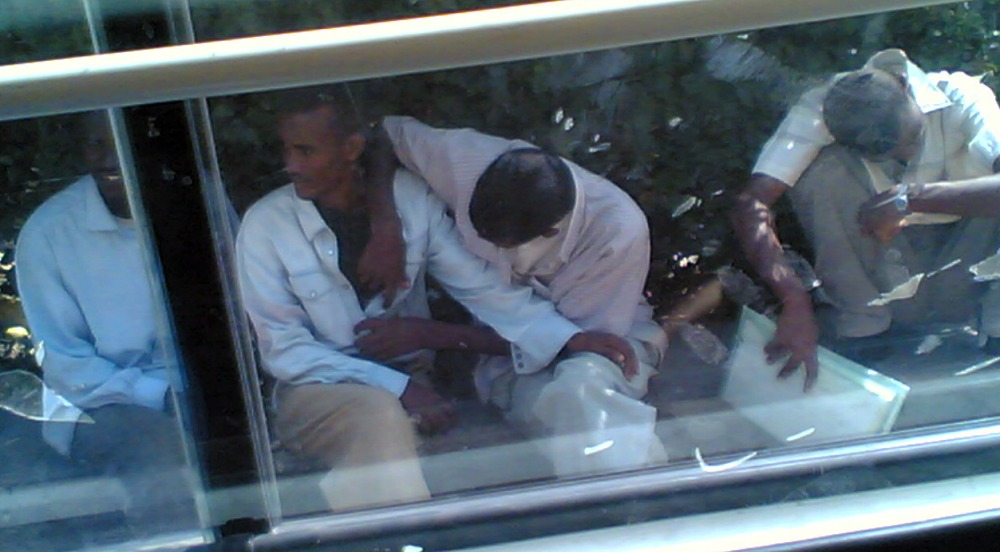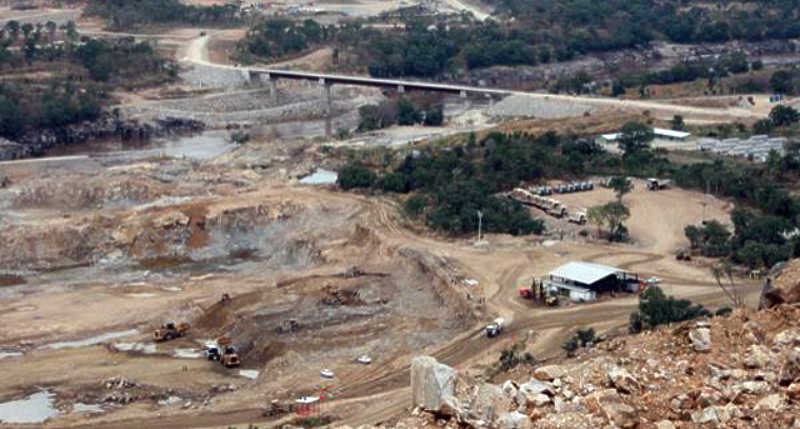|
Botswana | World Culture - Arts | Science - Education | Society World's oldest religion discovered in Botswana
The new archaeological findings in Botswana show that our ancestors in Africa engaged in ritual practice 70,000 years ago - some 30,000 years earlier than the oldest findings in Europe, according to a report printed in the research magazine 'Apollon' published by the University of Oslo (Norway).
"You could see the mouth and eyes of the snake. It looked like a real python. The play of sunlight over the indentations gave them the appearance of snake skin. At night, the firelight gave one the feeling that the snake was actually moving," Ms Coulson told 'Apollon'. The team - composed of scientists and students from the Norwegian universities of Oslo and Tromsø and from the University of Botswana - found no evidence that work had recently been done on the rock. In fact, much of the rock's surface was extensively eroded. Wondering what the cave had been used for and how long people had been going there, the archaeologist team decided to dig a test pit directly in front of the python stone. At the bottom of the pit, they found many stones that had been used to make the indentations. Together with these tools, some of which were more than 70,000 years old, they found a piece of the wall that had fallen off during the work. In the course of their excavation, the Norwegian-Batswana team found more than 13,000 artefacts. "All of the objects were spearheads and articles that could be connected with ritual use, as well as tools used in carving the stone," the team concluded. They found nothing indicating another use of the cave. Further, the stones that the spearheads were made from are not from the Tsodilo region but must have been brought from hundreds of kilometres away. These spearheads were better crafted and more colourful than other spearheads from the same time and area. Surprisingly enough, it was only the red spearheads that had been burned. "Stone age people took these colourful spearheads, brought them to the cave, and finished carving them there. Only the red spearheads were burned. It was a ritual destruction of artefacts. There was no sign of normal habitation. No ordinary tools were found at the site. Our discovery means that humans were more organised and had the capacity for abstract thinking at a much earlier point in history than we have previously assumed. All of the indications suggest that Tsodilo has been known to mankind for almost 100,000 years as a very special place in the pre-historic landscape," according to Ms Coulson. Ms Coulson further discovered a secret chamber behind t
"The shaman, who is still a very important person in San culture, could have kept himself hidden in that secret chamber. He would have had a good view of the inside of the cave while remaining hidden himself. When he spoke from his hiding place, it could have seemed as if the voice came from the snake itself. The shaman would have been able to control everything. It was perfect," she says. The shaman could also have "disappeared" from the chamber by crawling out onto the hillside through a small shaft. One is compelled to wonder why no one has made this discovery before. In fact, Ms Coulson is one of the few archaeologists studying the Middle Stone Age in Africa. The Middle Stone Age spans the period from 250,000 until 40,000 years ago, yet very few human traces have been found from that period. Archaeologists studying Africa - especially East Africa - have most often concentrated on the many extremely old finds that can tell us more about human history from the Early Stone Age, which lasted from about two million until 250,000 years ago, Ms Coulson holds. It was a major archaeological find five years ago that made it possible for Sheila Coulson to date the finds in this little cave in Botswana. Up until the turn of the century, archaeologists believed that human civilisation developed in Europe after our ancestors migrated from Africa. This theory was crushed by archaeologist Christopher Henshilwood, when he published his find of traces from a Middle Stone Age dwelling in the Blombos Cave in Southern Cape, South Africa. "That was the first solid archaeological evidence to demonstrate that early Homo sapiens were thinking abstractly and behaving like modern people long before it was thought to be possible. It became clear that Africa was not just the place that people became physically modern, but that many culturally modern practices were present in Africa long before they appeared in Europe," says Ms Coulson. Since the publication of the find at Blombos, archaeologists from other parts of the world have come forward with similar evidence to confirm the earlier development of culturally modern practices. "The finds at Tsodilo fit this pattern," Ms Coulson concludes. By Yngve Vogt, Alan Louis Belardinelli & afrol News staff © afrol News - Create an e-mail alert for Botswana news - Create an e-mail alert for World news - Create an e-mail alert for Culture - Arts news - Create an e-mail alert for Science - Education news - Create an e-mail alert for Society news
On the Afrol News front page now
|
front page
| news
| countries
| archive
| currencies
| news alerts login
| about afrol News
| contact
| advertise
| español
©
afrol News.
Reproducing or buying afrol News' articles.
You can contact us at mail@afrol.com


